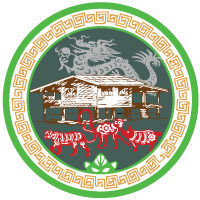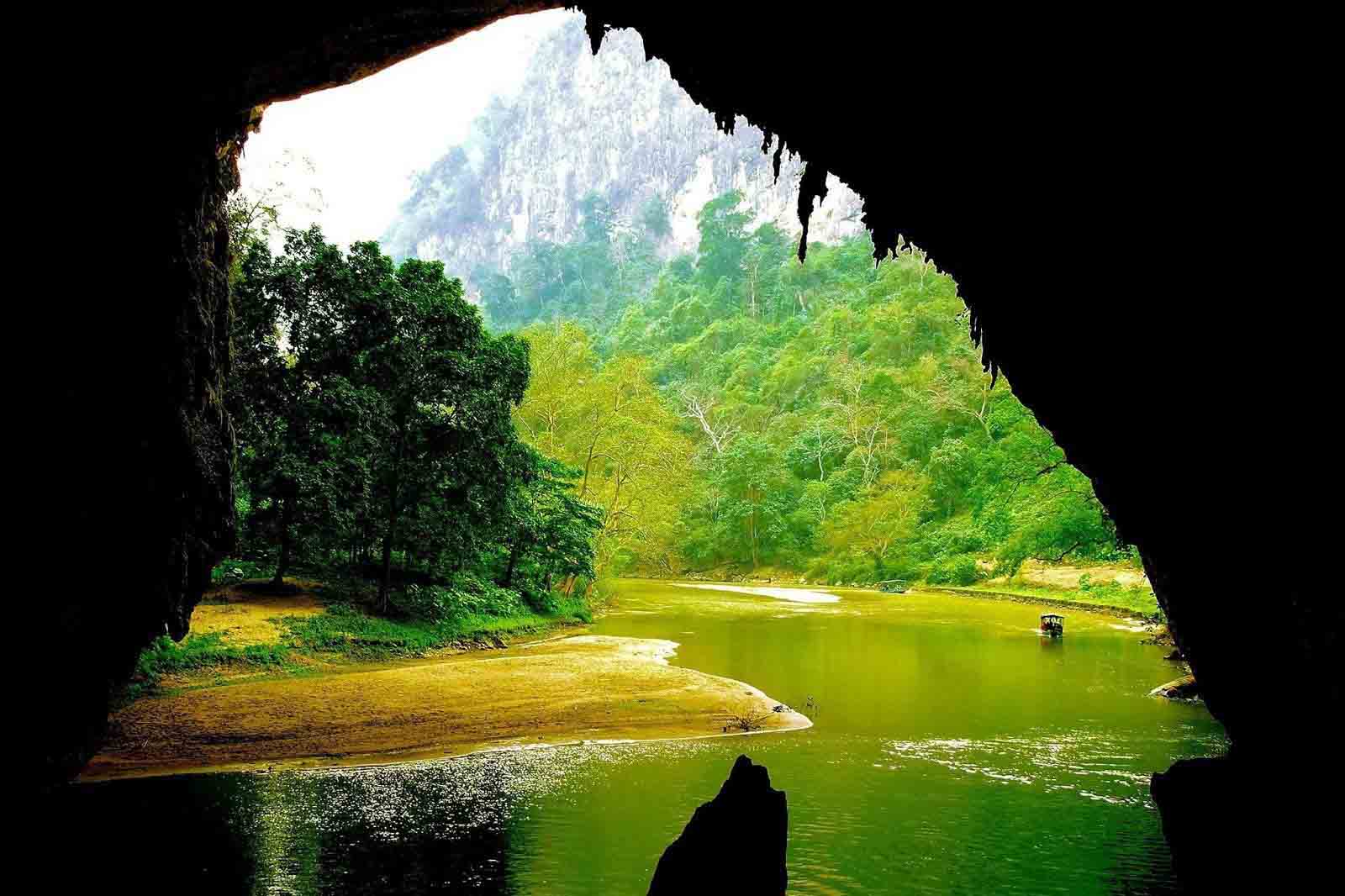Nestled in the northeast of Vietnam, Bac Kan Province is a destination still relatively unexplored by tourists, offering an authentic and exotic experience. Far from the hustle and bustle of big cities, Bac Kan reveals exceptional natural heritage and a preserved ancestral culture.
Why visit Bac Kan?
- Preserved nature: Ba Be Lake, one of the largest natural lakes in Vietnam, is a true natural gem. Its turquoise waters, green islands, and mysterious caves make it an ideal relaxation spot.
- Ethnic villages: The Tày, Dao, and Hmong ethnic groups live in harmony with nature in villages with stilt houses. Here, you can discover their traditions, craftsmanship, and way of life.
- Karst landscapes: Bac Kan’s karst landscapes are spectacular, with limestone peaks, underground rivers, and lush forests.
Must-visit villages in Bac Kan
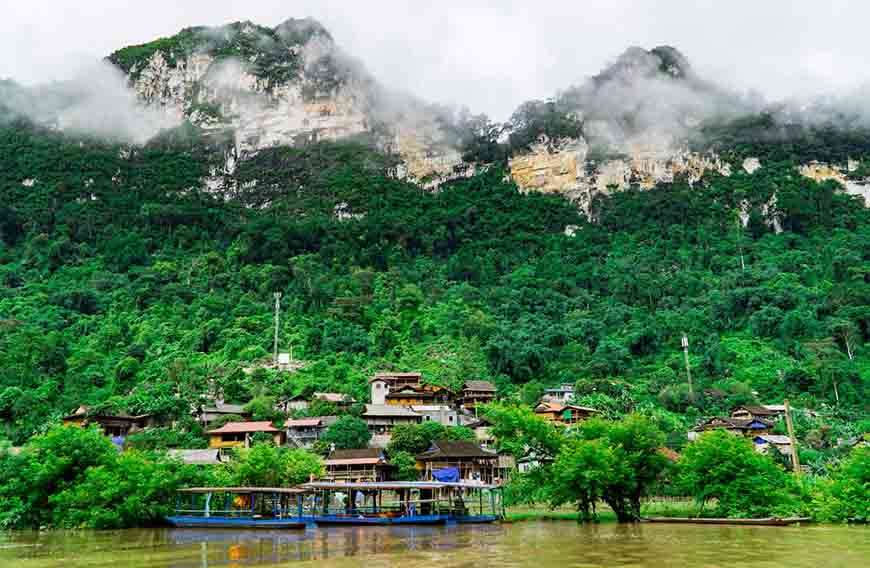
Pac Ngoi: The heart of Ba Be Lake
Located on the shores of Ba Be Lake in Nam Mau commune, Pac Ngoi is an emblematic village that perfectly embodies the authenticity of Vietnamese rural life. Its stilt houses, built with wood and bamboo, gracefully rise above the water, offering a unique sight.
- Cultural immersion: The residents of Pac Ngoi, mainly from the Tày ethnic group, warmly welcome visitors and gladly share their traditional way of life. You can witness weaving demonstrations, taste authentic cuisine, and even participate in local festivities.
- Activities: Besides exploring the village, you can engage in various water activities on Ba Be Lake, such as kayaking or fishing. Hiking enthusiasts will also find joy in the surrounding mountains.
- Specialties:
- Cuisine: Don’t miss the “cha ca” (grilled fish with lemongrass), a typical dish of the region.
- Handicrafts: Handwoven textiles make unique souvenirs to take back.
- How to get there: From Hanoi, expect about a 6-hour bus ride to Bac Kan, then an additional hour by car or motorcycle to reach Pac Ngoi.
♥ Read also : Ba Be Lake: A Photographer’s Paradise

Dau Dang: In the heart of pristine nature
Dau Dang is a true oasis of peace, famous for its majestic waterfall and green landscapes. Nature lovers will be delighted by the wild beauty of this small village. Sometimes called the village of the 4 no’s – no roads, no electricity, no internet, no school, the hamlet of Dau Dang (Ban Cam village, Nam Mau commune, Ba Be district) is one of the most isolated hamlets in the region, beyond the Nang River.
- Dau Dang waterfall: This waterfall, one of the most beautiful in the region, is a true spectacle of nature. You can refresh yourself in its crystalline waters and enjoy a breathtaking view of the valley.
- Rural life: The inhabitants of Dau Dang mainly live off agriculture. You can meet them in the fields, witness rice harvesting, or discover their traditional farming techniques.
- Specialties:
- Cuisine: Fresh river fish dishes are delicious. Don’t hesitate to try “ca kho to” (fish cooked in a thick sauce).
- Handicrafts: Woven bamboo baskets are highly appreciated as utility and decorative items.
- How to get there: Dau Dang is easily accessible from Ba Be by car or motorcycle.
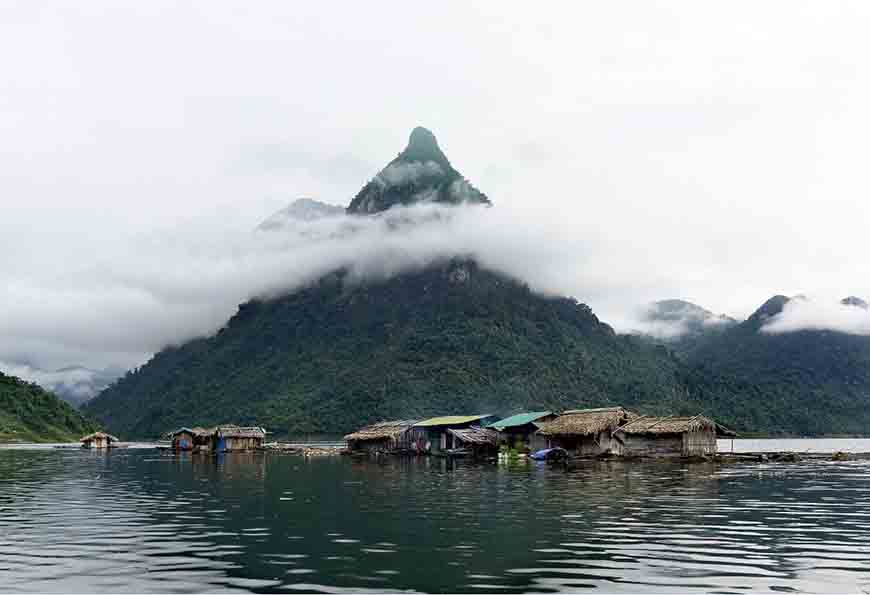
Na Hang: The realm of hidden waterfalls
Although technically in Tuyen Quang Province, Na Hang is often visited by those exploring Bac Kan. A true paradise for lovers of wild nature, this region is known for its natural beauty, mountainous landscapes, impressive lakes, and several spectacular waterfalls, such as Khuoi Nhi and Pac Ban falls.
- A hiker’s paradise: Numerous hiking trails crisscross the mountains of Na Hang, offering breathtaking panoramas. You can discover hidden waterfalls, swim in natural pools, and immerse yourself in lush nature.
- Dao culture: Na Hang district is mainly inhabited by the Dao ethnic group, known for its ancestral traditions and unique craftsmanship. You can visit Dao villages, explore their way of life, and admire their colorful embroideries.
- Specialties:
- Cuisine: Bamboo-based dishes are a local specialty, as well as forest products like wild mushrooms.
- Handicrafts: Handwoven fabrics and carved wooden objects make authentic souvenirs.
- How to get there: From Bac Kan, expect about a 3-hour drive by car or motorcycle to reach Na Hang.
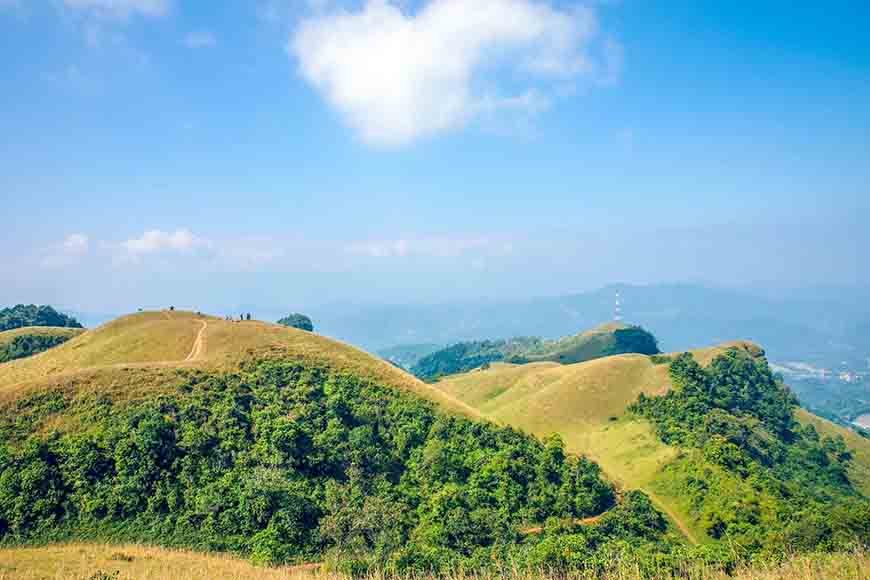
Sam Chiem
This lesser-known site, located in the Ngan Son district, is a peaceful place with green hills. It is ideal for nature lovers and those seeking to escape the hustle and bustle of cities.
- Green meadows: Sam Chiem Steppe is characterized by its vast green meadows, scattered with wildflowers and lush foliage. This picturesque landscape stretches as far as the eye can see, providing an ideal setting for outdoor activities.
- Rural life: Life in Khuổi Nộc is marked by the traditions of ethnic minorities, especially the Tày and H’mong. The inhabitants mainly live off agriculture, cultivating terraced rice fields and other food crops.
- Specialties:
- Cuisine: Sticky rice, often served with meat or vegetable dishes, is a staple in local cuisine. Fish, caught in the surrounding rivers, is often grilled and seasoned with fresh herbs.
- Handicrafts: The artisans of Sam Chiem are known for their craftsmanship in making handmade products, including textiles and bamboo items.
- How to get there: Sam Chiem is accessible from the town of Bac Kan, located approximately 30 to 50 kilometers away.
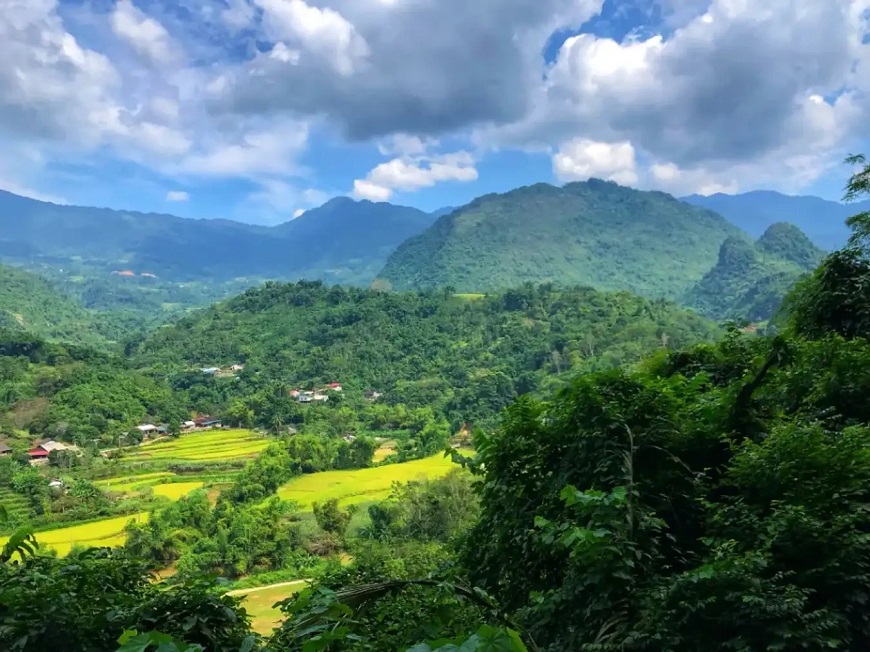
How and when to get
to Bac Kan?
- Location: Bac Kan is about 160 km north of Hanoi, making it an accessible destination for a getaway.
- From Hanoi: You can reach Bac Kan by bus from the My Dinh bus station. The journey takes about 5 hours. It is also possible to rent a vehicle with a driver.
- The best time to visit Bac Kan is from November to April when the weather is mild and dry.
Practical information
- Accommodation: In Bac Kan, you can find hotels, hostels, and homestays.
- Local transport: To get around within the province, you can rent a motorbike, a bicycle, or take a taxi.
- Budget: Bac Kan is a budget-friendly destination. You can travel on a tight budget.
By exploring the authentic villages of Bac Kan, you will have an unforgettable experience and contribute to sustainable tourism development in this beautiful region.
